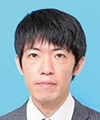 |
|||||||||||||||||
|
|
|||||||||||||||||
|
Feature Articles: Media System Technology for Creating an Appealing User Experience Vol. 13, No. 4, pp. 22–27, Apr. 2015. https://doi.org/10.53829/ntr201504fa3 Creating an Appealing User Experience by Applying Media System TechnologyAbstractThis article introduces NTT efforts aimed at creating appealing user experiences by applying the wide variety of media system technology under development at NTT, including technologies related to speech, language, audio, still images, and video. The work described here focuses on two areas: a personal agent that is intimately close to the user and provides personalized services that stimulate human knowledge and behavior, and high-sense-of-presence media services that enable the user to enjoy extremely natural viewing experiences. Keywords: personal agent, high sense of presence, media system processing technology 1. Creation of personalized services that stimulate human knowledge and behavior1.1 Virtual agentsIn recent years, virtual agents that can satisfy the various needs of individual users have been attracting attention. In particular, virtual agents that respond to voice input and can retrieve weather reports and answer simple questions have been implemented in smartphones and other personal devices, so such agents are now more readily available. However, these kinds of services are positioned as an input option for web search functions, and they simply present the results of searches performed using the given keywords. This form of use involves a single question and a single response, and is therefore limited to executing just one function of the original roles of the virtual agent. Currently, such virtual agents are mostly confined to virtual worlds such as the web, and the information they can retrieve is limited to that domain. They cannot use information from the user’s real-world situation to interact with and influence the user. We consider this to be a major obstacle to be overcome in developing future virtual agents. 1.2 NTT’s concept of a virtual agentIn view of the situation described above, NTT has shed the idea of a virtual agent that is confined to a virtual world and interacts with users in the form of a single response to a single question in favor of a personal agent that understands the user intimately and exists together with the user in the real world (Fig. 1). NTT is now moving forward with research and development (R&D) to realize such an agent. The NTT concept of a personal agent involves three important elements. One is that the agent can understand the user’s situation and intentions in the context of the real world through technology that senses and processes various kinds of media. Another is that it can actively influence the user based on its understanding of the user’s situation and intentions. The third element is that it grows together with the user by understanding the user’s situation and influencing the user accordingly. We believe that implementing these elements requires technology for understanding real-world situations and organizing and structuring that information (real-world structuring technology), and technology for understanding both the explicit and latent intentions of the user (technology for understanding humans). We are developing various types of media system technology to support the required technology.
1.3 Evolution of personal agentsNTT has set two milestones for developing the personal agent and is moving forward with a policy for achieving the ultimate goal of this technology (Fig. 2). The first step is to create a user profile by collecting information on the user’s interests and preferences from dialogs with the user and to function as a kind of servant or butler by providing appropriate support based on the profile. The second step is to sense the user’s present situation, the ambient mood, and the user’s expressions and state, and adaptively support the user accordingly, like a friend. The ultimate goal is to go beyond simply presenting a short-term optimum solution. Rather, the personal agent will anticipate future situations and influence the user with care and understanding on that basis, like a family member.
For example, consider a user who is trying to lose weight. Rather than recommending a nearby fast food restaurant, the agent would respond with proper concern for the user’s goals and recommend a restaurant that has a health-oriented menu, even if it involves a circuitous route. We believe the personal agent towards which NTT is working will be capable of providing a new and appealing user experience unlike any virtual agent that now exists. These Feature Articles describe technology that supports the NTT concept of a personal agent and presents specific examples. The article, “Media Processing Technology for Achieving Hospitality while on the Go,” describes a service that guides the user around a city, statistical machine translation technology for presenting guide information, and robust media search technology for recognizing objects in an image [1]. “Media Processing Technology for Achieving Hospitality in Information Search” describes a service for assisting users in their daily activities and subject identification technology for searching the Internet for information related to an image captured by a camera, natural language processing technology for understanding the user’s intention and responding in a natural way, and user-designed speech synthesis technology for generating synthesized speech for various speakers and speaking styles [2]. “Media Processing Technology for Business Task Support” introduces technology that holds promise for applications extending beyond these service scenarios to business scenarios [3]. 2. Appealing sense-of-presence media services2.1 High-definition videoIn Japan, digital broadcasting via communication satellite began in 1996. That was followed by digital broadcasting via broadcast satellite in 2000 and by terrestrial digital broadcasting in 2003. The current high-definition television (HDTV) video format*1 provides a remarkable improvement in image quality compared with analog broadcasting and is now used for almost all programs that are broadcast. The next generation of high-definition video media is said to be the 4K and 8K formats,*2 which provide an overwhelmingly superior feeling of detail and representation of reality compared to HDTV and can be used to provide services that create a high sense of presence. The 4K video format was first introduced in movie theaters in 2007, and since then, the number of screens has been increasing. As a result, various types of practical 4K equipment have been developed, including projectors and cameras for professional use. Furthermore, the Next Generation Television and Broadcasting Promotion Forum (NexTV-F) began conducting test broadcasts in the 4K format in June 2014. Consumer-use 4K-resolution displays are also appearing on the market, and home use of 4K TV is becoming more popular as well. 2.2 Trends in Japan and NTT related to high-definition videoCountries around the world are putting more effort into achieving 4K and 8K broadcasting, and a world-leading roadmap for commercialization of these formats has been formulated by a study group of Japan’s Ministry of Internal Affairs and Communications. Furthermore, an interim report from a follow-up meeting recommended acceleration of the roadmap to promote 4K and 8K broadcasting (Fig. 3) [4].
For the implementation of 4K and 8K telecom and broadcasting services, broadcasters, telecom carriers, and equipment manufacturers have established the NexTV-F as an organization for cooperation. NTT is a proponent of the organization and is therefore collaborating with various enterprises to push forward with the implementation of the world’s most advanced 4K and 8K services. 2.3 Toward implementing high-sense-of-presence media servicesThe NTT vision for future high-sense-of-presence media services is to realize rich life environments by providing user experiences that combine high-definition video, high-definition audio, and high sense of presence. The subjects for ongoing R&D for telecom and broadcasting services that use high-definition media include HEVC (High Efficiency Video Coding) encoding technology, MMT (MPEG Media Transport) transmission technology, FireFort®-LDGM FEC (Low-Density Generator Matrix Forward Error Correction) technology, and other elemental technologies that are essential to service implementation [5–7]. However, implementing high-sense-of-presence media services that go beyond high definition requires more than simply improving resolution, compression quality, and transmission quality. What is needed is innovative R&D that can produce technology for reproducing the sensation of being in a certain place or the feeling of being able to understand even more than one could understand by being in that place. The article “Audio-visual Technology for Enhancing Sense of Presence in Watching Sports Events” describes five areas of innovative technology that NTT is working on to implement high-sense-of-presence media services [8]:
3. Future developmentWe believe that the media system technology NTT is developing will spread throughout the world and bring about new, appealing user experiences via a variety of services. For the personal agent, we will continue investigating forms of service and technology that make it possible to respond to user needs, and we will develop services in collaboration with partners in various fields. For the high-sense-of-presence media services, too, we will continue to push for the implementation of 4K/8K services and promote innovative media technology for the evolution from high definition to high sense of presence in cooperation with broadcasters, video distributors, and other partners. References
|
|||||||||||||||||

















